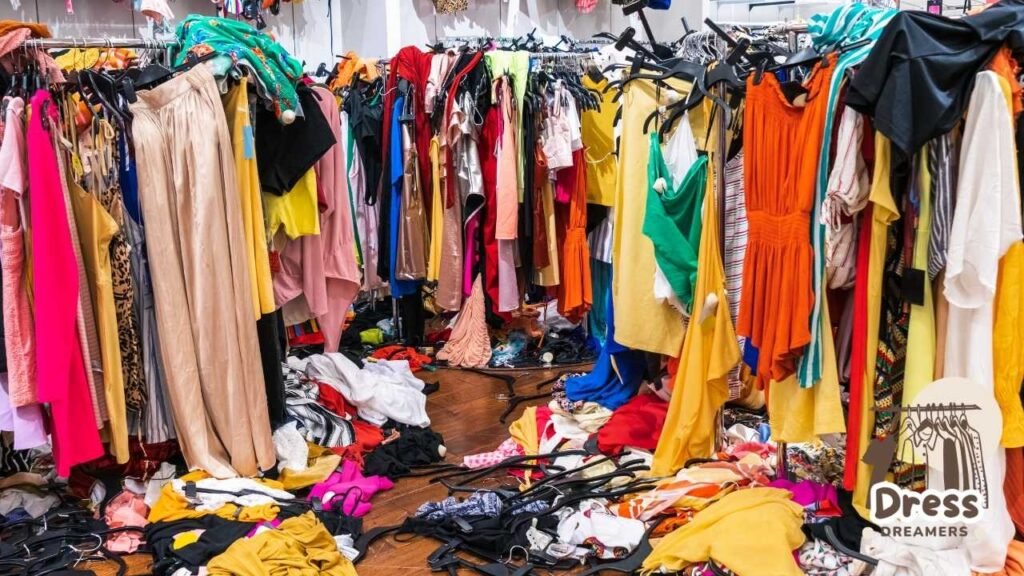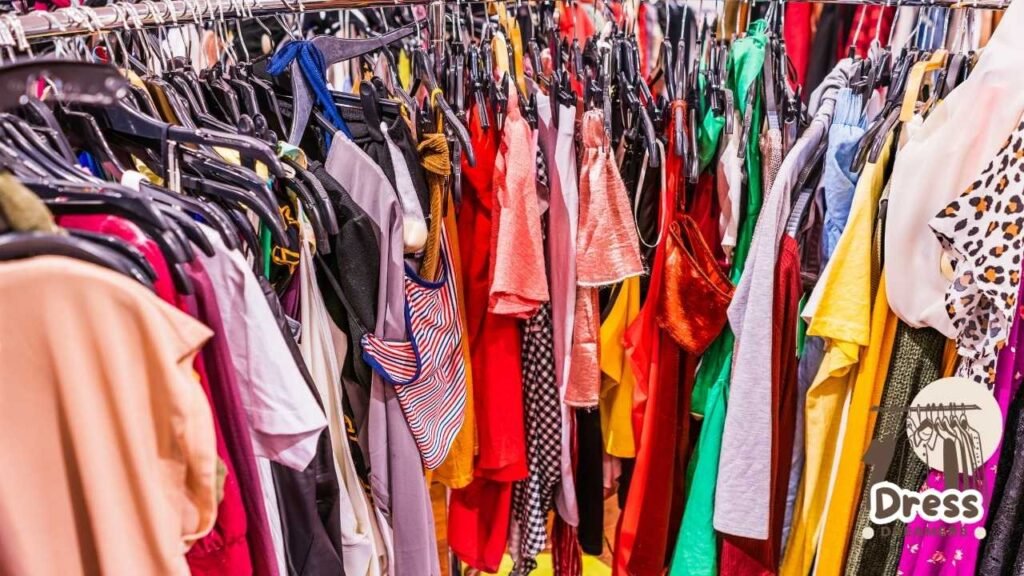Fast fashion has become an integral part of modern consumer culture. It allows people to access trendy, affordable clothing that aligns with the latest styles. However, beneath its attractive prices and convenience lies a darker reality. The Hidden Costs of Fast Fashion: A Guide to Sustainability reveals how the true cost of fast fashion extends far beyond what meets the eye, impacting the environment, society, and economy. This article explores the environmental and social consequences of fast fashion, highlights sustainable alternatives, and provides actionable tips for making more eco-friendly choices.
Defining Fast Fashion: What It Is and Why It Matters
Fast fashion refers to the rapid production of inexpensive clothing that mirrors the latest trends. Major brands like Zara, H&M, and Forever 21 have mastered the art of quick turnaround times, ensuring that new designs hit the shelves almost instantly. While this makes fashion more accessible, it comes with a significant cost to people and the planet.

“Fashion should be stylish and sustainable. One without the other is incomplete.” – Anonymous
The Evolution of Fast Fashion: How It Took Over the Industry
Fast fashion gained momentum in the 1990s, fueled by globalization and technological advancements. With the ability to mass-produce clothing at an unprecedented pace, retailers began releasing new collections almost every week. This cycle encourages consumers to buy more, leading to excessive consumption and waste.

Inside the Fast Fashion Business Model: Speed, Cost, and Consequences
The fast fashion business model is based on speed and cost efficiency. To maintain low prices and high turnover, brands often:
- Outsource production to countries with minimal labor regulations.
- Use inexpensive materials that degrade quickly.
- Prioritize profits over sustainability.
- Engage in aggressive marketing to encourage frequent purchases.

| Fast Fashion Tactics | Consequences |
| Outsource production to countries with minimal labor regulations | Exploitative working conditions |
| Use inexpensive materials that degrade quickly | Increased waste and environmental harm |
| Prioritize profits over sustainability | Long-term ecological and social damage |
| Engage in aggressive marketing | Encourages overconsumption |
Environmental Consequences of Fast Fashion: A Growing Crisis
The fast fashion industry is among the most harmful to the environment. From excessive water usage to carbon emissions, its impact on the planet is profound.
Water Pollution: How Fast Fashion Contaminates Our Waterways
- The textile industry significantly contributes to global water pollution.
- Synthetic fabrics like polyester shed microplastics into water sources.
- The dyeing and finishing processes discharge harmful chemicals into rivers and oceans.
- According to the World Bank, the fashion industry accounts for 20% of global wastewater production.

| Environmental Impact | Statistics |
| Fashion industry wastewater | 20% of global wastewater (World Bank) |
| Fashion industry carbon footprint | 10% of global carbon emissions (UN) |
| Textile waste per American | 70 pounds annually (EPA) |
Carbon Emissions: The Fashion Industry’s Role in Climate Change
- The production, transportation, and disposal of clothing generate high greenhouse gas emissions.
- The United Nations reports that the fashion industry contributes 10% of global carbon emissions.
- Synthetic fabrics, which rely on fossil fuels, further increase emissions.

Textile Waste: The Dark Side of Disposable Fashion
- Fast fashion promotes a “buy and discard” mentality, leading to excessive textile waste.
- The Environmental Protection Agency (EPA) estimates that the average American throws away 70 pounds of clothing annually.
- Most discarded clothing ends up in landfills, where synthetic materials take centuries to decompose.
Microplastics and Clothing: A Hidden Threat to Marine Life
- Clothing made from synthetic fibers releases microplastics when washed.
- These tiny particles enter oceans, harming marine life and contaminating the food chain.
- A single load of laundry can release hundreds of thousands of microplastics into waterways.
The Human Cost of Fast Fashion: Exploited Workers and Ethical Issues
Fast fashion not only harms the environment but also exploits workers and disregards ethical labor practices.
Unsafe Working Conditions: The Reality Behind the Factories
- Factory workers often endure hazardous working conditions, including long hours and minimal wages.
- The 2013 Rana Plaza collapse in Bangladesh, which killed over 1,100 workers, exemplifies the risks faced by garment workers.
“Every purchase is a vote for the world you want to live in.” – Anonymous
Low Wages and Labor Exploitation: Who Pays the Price for Cheap Clothing?
- Many brands outsource production to countries with weak labor laws.
- Workers are frequently paid below a living wage.
- Child labor is prevalent in some supply chains.
| Exploitative Practice | Impact on Workers |
| Low wages | Workers struggle to meet basic needs |
| Unsafe working conditions | Health risks and workplace accidents |
| Lack of transparency | Difficult to hold brands accountable |
The Transparency Problem: Why It’s Hard to Hold Brands Accountable
- Many fashion brands lack transparency regarding their supply chains.
- This opacity prevents consumers from making informed ethical choices.
- Regulators struggle to enforce standards due to unclear sourcing practices.
Mental Health and Consumerism: The Psychological Toll of Fast Fashion
- The pressure to keep up with constantly changing fashion trends can lead to consumer anxiety.
- Marketing strategies create a “fear of missing out” (FOMO), driving overconsumption.
Fast Fashion’s Economic Impact: Jobs, Inequality, and Consumerism
The economic impact of fast fashion is complex. While it creates jobs, it also perpetuates inequality and unsustainable consumerism.
Balancing Job Creation and Ethical Concerns in the Industry
- Fast fashion employs millions of workers, primarily in developing countries.
- However, these jobs often come with unsafe conditions and unfair wages.
The Inequality Gap: Who Really Profits from Fast Fashion?
- While corporations and retailers profit, workers remain underpaid and undervalued.
- Local economies suffer as smaller, ethical brands struggle to compete.
Consumerism Culture: How Fast Fashion Fuels Overbuying
- The accessibility of cheap clothing encourages excessive purchasing habits.
- This results in financial strain on individuals and contributes to global waste problems.
Disrupting Traditional Retail: The Effect on Ethical Brands
- The dominance of fast fashion has forced many traditional, ethical retailers out of business.
- The industry’s rapid pace leads to a homogenization of styles and trends.
Sustainable Fashion Alternatives: Making Ethical Choices
Fortunately, consumers have several sustainable alternatives to fast fashion.
Secondhand Shopping: Extending the Life of Fashion
- Thrift stores, consignment shops, and online marketplaces like Poshmark and ThredUp offer stylish secondhand clothing.
- Buying pre-owned items extends their lifespan and reduces waste.

| Sustainable Brand | Key Feature |
| Patagonia | Fair labor and sustainable materials |
| Reformation | Eco-friendly fabrics |
| Eileen Fisher | Circular fashion economy |
“Quality over quantity is the key to a sustainable wardrobe.” – Anonymous
Ethical and Eco-Friendly Brands: Who’s Leading the Change?
- Brands like Patagonia, Reformation, and Eileen Fisher prioritize sustainability and fair labor.
- Look for certifications like Fair Trade, B Corp, and Global Organic Textile Standard (GOTS).
Clothing Rental Services: A Smart Alternative to Buying New
- Companies like Rent the Runway and Le Tote allow customers to rent clothing instead of purchasing.
- This model reduces waste and maximizes garment usage.
DIY and Upcycling: Giving Old Clothes a New Life
- Repurpose old clothing into new styles.
- Mending and altering garments extends their life and reduces waste.
Practical Steps for Sustainable Fashion Choices
Making eco-friendly fashion choices doesn’t have to be difficult. Here are some practical tips:
- Shop Second Hand First: Always check thrift stores before buying new.
- Invest in Quality: Buy durable, timeless pieces instead of trendy, short-lived items.
- Support Ethical Brands: Research and support sustainable fashion companies.
- Care for Your Clothes: Wash in cold water, air dry, and repair instead of discarding.
- Create a Capsule Wardrobe: Build a minimalist collection of versatile, mix-and-match pieces.
Technology’s Role in a Greener Fashion Industry
Innovation is helping to create a more sustainable fashion industry.
Innovative Fabrics: The Future of Sustainable Textiles
- New materials like Tencel, recycled polyester, and biodegradable fabrics are reducing environmental harm.
Digital Shopping and Secondhand Platforms: Reducing Fashion Waste
- Online platforms like Depop and ThredUp promote secondhand shopping.
Supply Chain Transparency: How Tech Can Ensure Ethical Sourcing
- Blockchain technology helps track ethical sourcing and production practices.
Green Production Methods: 3D Printing, Recycling, and Beyond
- 3D printing and digital design minimize fabric waste in the production process.
| Sustainable Tech | Impact |
| Tencel and recycled polyester | Reduce environmental harm |
| Digital platforms (Depop, ThredUp) | Promote secondhand shopping |
| Blockchain supply tracking | Ensures ethical sourcing |
“Innovation and sustainability should walk hand in hand.” – Anonymous
Shaping the Future of Fashion: A Shift Toward Sustainability
The future of fashion is shifting toward sustainability, driven by:
- Consumer Awareness: More people are demanding ethical and eco-friendly options.
- Brand Responsibility: Companies are adopting greener practices.
- Regulations: Governments are implementing policies to encourage sustainability.
- Innovation: Advancements in materials and production methods are shaping a more responsible industry.
Circular Fashion Economy: Closing the Loop on Waste
The fashion industry is gradually shifting toward a circular economy, where garments are designed for longevity, recyclability, and minimal waste. Brands are exploring take-back programs, rental models, and clothing swaps to close the loop and reduce landfill waste. Companies like H&M and Levi’s have introduced recycling initiatives that encourage consumers to return worn-out clothes in exchange for store credit.
The Reality of Greenwashing in Fashion: Spotting Misleading Claims
Many brands market their collections as “sustainable” without substantial proof, a practice known as greenwashing. Companies may use vague terms like “eco-friendly” or launch limited sustainable lines while still engaging in unethical practices. Consumers must learn to differentiate between genuine sustainability efforts and misleading marketing tactics.
Biodegradable and Regenerative Fashion: The Next Frontier
Beyond recycling, researchers are developing fully biodegradable fabrics that decompose naturally without polluting the environment. Materials like mushroom leather (mycelium), algae-based textiles, and bioengineered silk are promising alternatives that reduce dependence on fossil fuels and synthetic fibers.
Consumer Activism: How Shoppers Can Demand Ethical Change
Individual choices can create significant change. Activists, influencers, and organizations are pushing brands to be more transparent and sustainable. Boycotting unethical companies, signing petitions, and supporting ethical brands help drive industry-wide change. Fashion Revolution’s #WhoMadeMyClothes campaign is a prime example of how consumer activism influences brand accountability.
The Role of Government Regulations in Sustainable Fashion
- While you briefly mention regulations, you don’t elaborate on specific laws, policies, or initiatives (e.g., Extended Producer Responsibility (EPR), EU Circular Economy Plan, or bans on toxic chemicals in textiles). A deeper dive into how different governments are tackling fast fashion could add valuable insight.
The Psychology of Fast Fashion: How Marketing Fuels Overconsumption
- You mention FOMO (fear of missing out) but could further explore consumer psychology. How marketing tactics like scarcity marketing, influencer endorsements, and discount cycles drive impulse purchases and unsustainable habits?
The Impact on Local Artisans and Traditional Craftsmanship
- Fast fashion often undermines traditional craftsmanship and ethical, slow-fashion industries. Discussing how small artisans and indigenous weavers are affected could add depth.
E-Waste and Digital Fashion: The Hidden Environmental Costs
- With the rise of digital fashion (NFTs, virtual clothing, AI-powered design), the environmental impact of e-fashion is worth discussing. Is digital fashion truly sustainable, or does it create new waste issues?
Frequently Asked Questions
What is fast fashion?
Fast fashion is the quick and affordable production of trendy clothing.It prioritizes speed and affordability over quality, leading to environmental damage and exploitative labor practices.
Why is fast fashion harmful to the environment?
Fast fashion contributes to pollution, excessive water usage, high carbon emissions, and textile waste. Synthetic fabrics release microplastics, further damaging marine ecosystems and contaminating the food chain.
How does fast fashion exploit workers?
Many garment workers face unsafe conditions, low wages, and long hours. Brands often outsource production to countries with weak labor laws, increasing worker exploitation and ethical concerns.
What is the carbon footprint of fast fashion?
The fashion industry produces 10% of global carbon emissions. Manufacturing, transportation, and waste disposal contribute significantly, making it one of the most polluting industries worldwide.
What are sustainable alternatives to fast fashion?
Ethical brands, secondhand shopping, clothing rentals, and upcycling are sustainable alternatives. These options reduce waste, support fair labor, and promote eco-friendly materials and production methods.
How can consumers make sustainable fashion choices?
Buy quality over quantity, support ethical brands, shop secondhand, wash clothes responsibly, and repair instead of discarding. Small changes can reduce environmental impact and promote ethical fashion.
What role does technology play in sustainable fashion?
Innovations like recycled fabrics, blockchain supply tracking, and digital fashion platforms help reduce waste and promote transparency, making fashion more sustainable and environmentally friendly.
What is greenwashing in fashion?
Greenwashing occurs when brands falsely claim sustainability to attract eco-conscious consumers. Look for third-party certifications and research brands to verify their sustainability claims.
How does fast fashion affect consumer psychology?
Marketing tactics like influencer endorsements, limited-time sales, and fear of missing out (FOMO) encourage impulse buying, leading to overconsumption and unsustainable shopping habits.
What is the circular fashion economy?
A circular fashion economy focuses on recycling, reusing, and reducing waste. Brands implement take-back programs, rental services, and biodegradable materials to promote sustainability.
Conclusion
Fast fashion has transformed how we consume clothing, but at a significant cost to people and the planet. By making informed choices, supporting ethical brands, and embracing sustainable alternatives, we can all contribute to a more responsible and stylish future.
“The most sustainable fashion is the one already in your wardrobe.” – Anonymous

Catarina Ferreira – Fashion enthusiast and founder of Dress Dreamers. Based in Lisbon, Portugal, she shares insights on beauty, travel, fashion, and lifestyle. Passionate about inspiring others to express their unique style, Catarina curates trends, outfit ideas, and dressing guides to help you look and feel your best.




